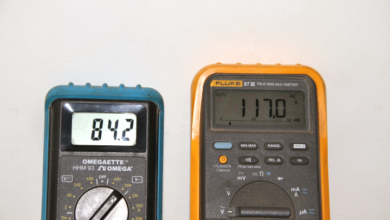Ultherapy Vs Morpheus8: The Key Differences You Need To Know Before Choosing

The choice between Ultherapy vs Morpheus8 depends on your specific skin needs, goals, and preferences. These two advanced technologies promise impressive results but work differently and target unique concerns.
In this article, we’ll break down the key differences between Ultherapy and Morpheus8 to help you make an informed decision.
1. Technology And Method
The most significant difference between Ultherapy and Morpheus8 lies in their technology. Ultherapy relies on focused ultrasound energy, while Morpheus8 combines microneedling with radiofrequency energy.
Both treatments stimulate collagen production, but they do so in different ways. Ultherapy works by heating the deeper layers of skin using ultrasound, which penetrates without damaging the surface.
Morpheus8, on the other hand, uses tiny needles to puncture the skin and deliver radiofrequency energy, remodeling the skin from the inside out.
2. Depth Of Treatment
Ultherapy targets the deeper layers of the skin, focusing on the foundational layer usually addressed in a surgical facelift. It doesn’t affect the skin’s surface, making it an excellent option for those seeking a non-invasive treatment that tightens and lifts the skin.
Morpheus8, in contrast, works on multiple layers of the skin, including the surface. The microneedling aspect of the treatment improves the skin’s texture, while the radiofrequency energy penetrates deeper to tighten and rejuvenate the skin’s structure.
It makes Morpheus8 more suitable for treating many skin concerns, from fine lines to deep scars.
3. Areas Of Focus
While both Ultherapy and Morpheus8 can be used on the face and neck, they differ in the specific areas they excel at treating.
Ultherapy is best for lifting and tightening sagging skin, especially around the jawline, brow, and neck. It’s best for patients who are primarily concerned with skin laxity.
Morpheus8, on the other hand, is more versatile. It can be used on the face, neck, and body and effectively treats issues like acne scars, stretch marks, and uneven skin texture.
If you’re looking to address multiple skin concerns beyond just sagging skin, Morpheus8 may be the better option.
4. Results And Longevity
Both Ultherapy and Morpheus8 stimulate collagen production, but the timeline and longevity of results can differ.
With Ultherapy, you may see improvements after two to three months, with full results appearing around six months post-treatment. The results can last up to two years, depending on your skin and how it responds to the treatment.
Morpheus8 Fort Lauderdale often delivers more immediate results, particularly when it comes to skin texture and tone. However, collagen production and skin tightening continue to improve over several months.
Results from Morpheus8 can last anywhere from one to two years, depending on your skin type and the number of sessions.
Read also: Udyam Registration for Partnerships and LLPs: Empowering Small Businesses in India
5. Downtime And Recovery
Another critical difference between Ultherapy and Morpheus8 is the recovery time. Ultherapy is a non-invasive treatment with little to no downtime. Some patients may experience mild redness or swelling, but these side effects typically resolve within a few hours.
Morpheus8, due to the microneedling aspect, can involve a bit more downtime. After treatment, you may experience redness, swelling, and small scabs as the skin heals.
Most patients recover within a few days, but depending on the depth and intensity of the treatment, the skin can take up to a week to heal fully.
6. Comfort During Treatment
Ultherapy and Morpheus8 also differ in terms of patient comfort. The intensity of the ultrasound energy can make Ultherapy uncomfortable for some patients, but most clinics offer numbing options to make the procedure more tolerable.
Morpheus8 is generally considered more comfortable because it uses a numbing cream before treatment, and the microneedling device is adjustable to the patient’s comfort level. However, some patients may experience mild discomfort during and after the procedure.
Which Treatment Is Right For You?
Choosing between Morpheus8 vs Ultherapy ultimately depends on your specific skin concerns, goals, and tolerance for downtime. If you’re primarily looking to lift and tighten sagging skin without downtime, Ultherapy may be the better option.
On the other hand, if you have more severe skin concerns, such as deep wrinkles, scarring, or uneven texture, Morpheus8 could offer more comprehensive results.
Consulting with a dermatologist or aesthetician is the best way to determine which treatment will best meet your needs. Both treatments offer impressive results and can help you achieve more youthful, firm, and radiant skin.
Conclusion
Ultherapy and Morpheus8 are both powerful non-surgical skin rejuvenation treatments that can deliver dramatic improvements.
While Ultherapy is focused on lifting and tightening, Morpheus8 offers more versatile results by addressing skin texture, tone, and deeper imperfections.
By understanding the key differences between these two treatments, you can make an informed choice and select the one that best fits your aesthetic goals.
Experience the transformative power of advanced non-surgical skin rejuvenation treatments at Allenby Cosmetic Dermatology.
Schedule a consultation today to discover how we can help you achieve more youthful, firm, and radiant skin. Contact us now to embark on your skincare journey.



